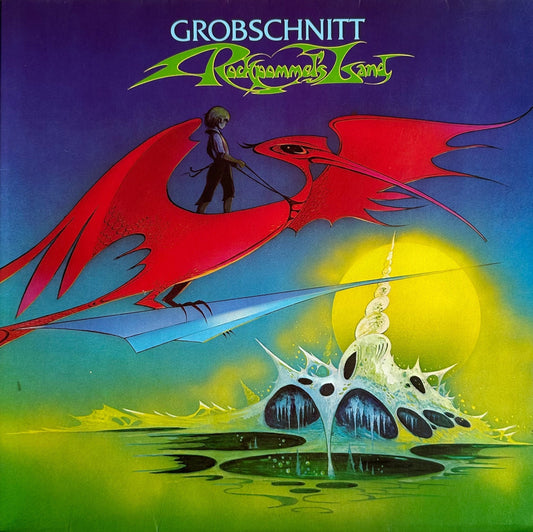“Alright. The last two boys, go ahead. Please.”
In this classroom, they’ve been learning how to make rainbows from paper and paint. They’ve been studying line, space, shape, form. They’ve been learning to Speak kindly to and about others and to Show RESPECT for others, school property, and all art supplies. (Yes, Conrad, all art supplies. So put down the crayon you’re mashing into Cynthia’s hair.)
There’s a little poster here, with some Zen calligraphy at its center. Above the swirling brush strokes, SHO-SHIN; below, FRESH MIND.
Exactly.
Wouldn’t that be nice? To be a third grader again, to walk into art class and greet Ms. Wilkins and sit down and see SHO-SHIN and think FRESH MIND?
Today’s exercise in FRESH MIND comes to us from Andrew Norman, bright young American composer who’s already been many places and done astonishing things. No third-grader he. In fact he’s made such a splash in the contemporary music world you may wonder why I hadn’t yet mentioned him.
Well, better late than never. Let’s consider music from three recent recordings. That should be enough. We’ll begin with Play, a symphony in three movements labeled Level 1, Level 2, and Level 3.
(Yes, Conrad, Levels, like in Candy Crush Saga. No, I don’t know why there aren’t lots more. Ask Mr. Norman.)
Regarding Play, Mr. Norman writes:
I wish you all could see Play performed live. . . . It is as much about watching choices being made and thoughts exchanged and feats of physical coordination performed as it is about listening to the melodies and harmonies and rhythms. . . .You’re not going to see how players often freeze in place, mid-breath and –bow-stroke, waiting to be turned on again by the flick of a percussive switch. You’re not going to see how the tiny ballet of pitchless finger-shifts at the beginning of Level 2 or the epic battle of slapsticks later in that movement play out in spatial, kinetic, choreographic terms on the stage. And you’re not going to see the 28 individuals who each offer a single solo note to create the work’s final phrase.
Get it? The conductor is not the only person shaping the performance. Players make choices also, and their choices shape the choices of others. At first Play seems to take us inside a cartoon crazy-house, its gleeful manic energy bouncing off the walls, shooting shards of music at us. But it has quiet moments too, and materials ordered as carefully as the architecture of any 21st-century skyscraper. Listen:
Norman again:
I definitely thought of and planned Play in terms of story arc and narrative and characters and conflicts. . . . I started at the work’s climax . . . and I worked backward from there, constructing threads of a story that might each plausibly lead to such a moment.
There you have it. Planning counts. Even more important, though, is the composer’s purity of spirit, his audacity (which is actually a measure of the trust he places in his audience). Not a single cautious note masquerades as Good Taste anywhere in Play.
SHO-SHIN. FRESH MIND.
Short of live performance, the best way to experience Play is through the Boston Modern Orchestra Project’s stunning high-res album (BMOP/sound 1040). Aside from the phenomenal sound, you can tell that every single musician is committed to the performance. That matters even more than usual. I like BMOP’s packaging: a nice card-stock trifold album with useful program booklet including essays by the composer and Daniel Stephen Johnson. You can subscribe to their recording series and get a new SACD every couple of months. I’m going to do it; this is repertoire unavailable elsewhere and definitely worth hearing.
Back to Andrew Norman: If you want something more intimate, something that gives you a closer peek at his OS, I heartily recommend Music in Circles (Parts I & II) from yMusic’s sophomore album Balance Problems (New Amsterdam NWAM059).
yMusic is a group of New York musicians (string trio, flute, clarinet, trumpet) who play new musics that draw variously on pop, electronica, classical, world-beat, and more. (Yes, I know there are other groups out there plowing the same field—but these folks are exceptionally good at it.)
What’s useful about Music in Circles is that its narrative moves at a slower pace. You can follow it more easily. Circles moves seamlessly between noise and pitch, beginning with utterances rooted in violin spiccato (mostly noise). The music slowly gathers power and eventually climaxes in bursts of harrowing lyricism—more musical than anything you would have anticipated, given the opening strains. It’s emotionally satisfying. If you don’t think new music can be beautiful, check this out. (Be patient; give it several listens.)
We have just enough space to introduce one more of Norman’s storms. This is a concerto. He has already written a couple for piano and orchestra, including Split, which rocked NY Phil audiences last November. Can’t wait to hear it. In the meantime we have Switch, a dynamic percussion workout for Colin Currie, available in a new Reference Recordings high-res album (RR FR-719 SACD) with Thierry Fischer’s rejuvenated Utah Symphony. What a trip!
More about the whole album next time. For now, here’s a clip of Switch. Currie says playing it was like being trapped inside a giant pinball machine.
Welcome to a more interactive classical world: video games, channel surfing, tweets, trolls. Norman’s music both embodies our splintered culture and provides a measure of cathartic release from that culture. That’s one neat trick from one fresh mind.
Lawrence Schenbeck was born on a mountaintop in Tennessee. In spite of that, he became a historical musicologist. He is the author of two books, many more scholarly articles, and countless liner notes, music reviews, and "casuals." He lives in the Atlanta area with his family and too much music, Tchaikovsky being the least of it. Literally.



